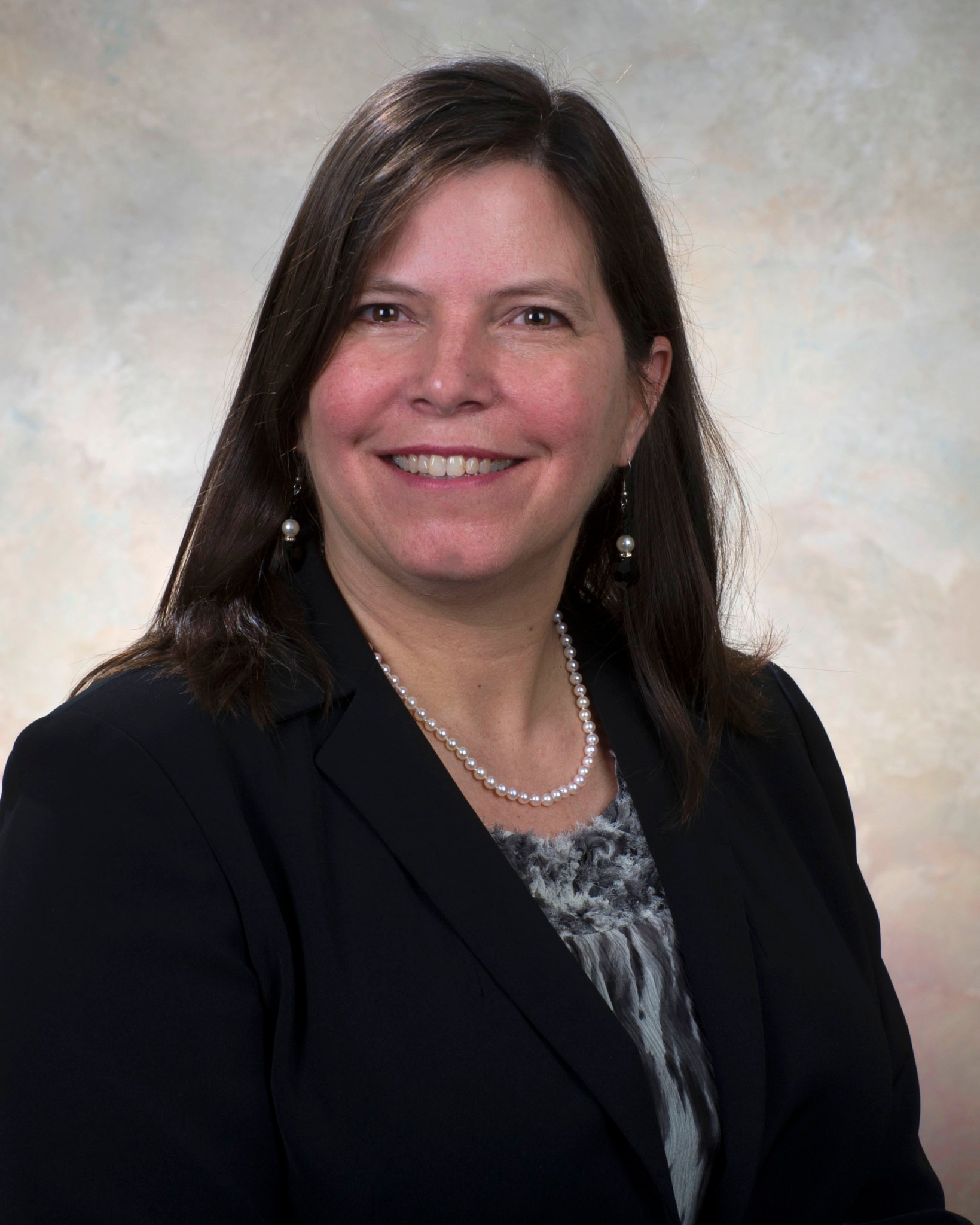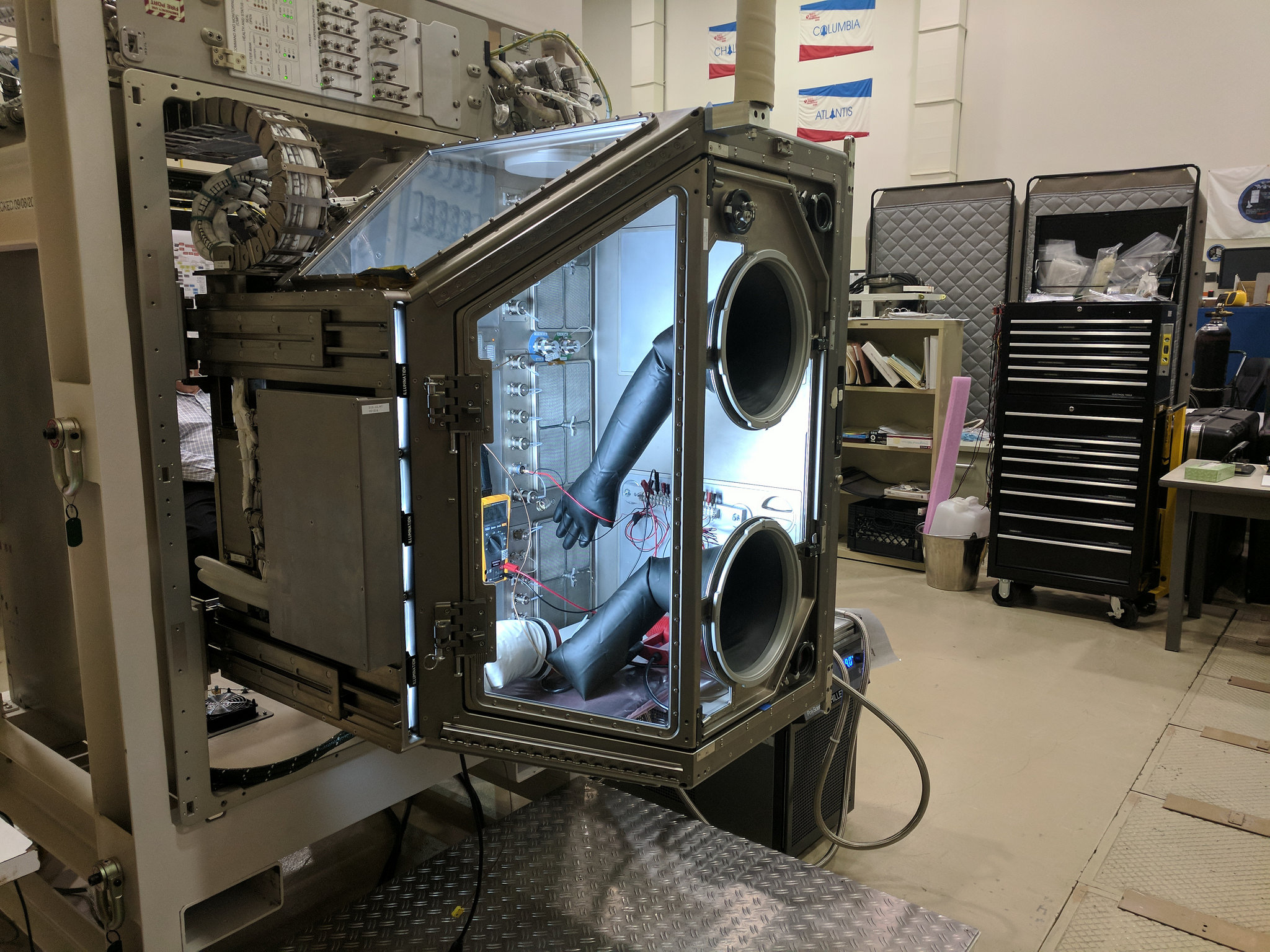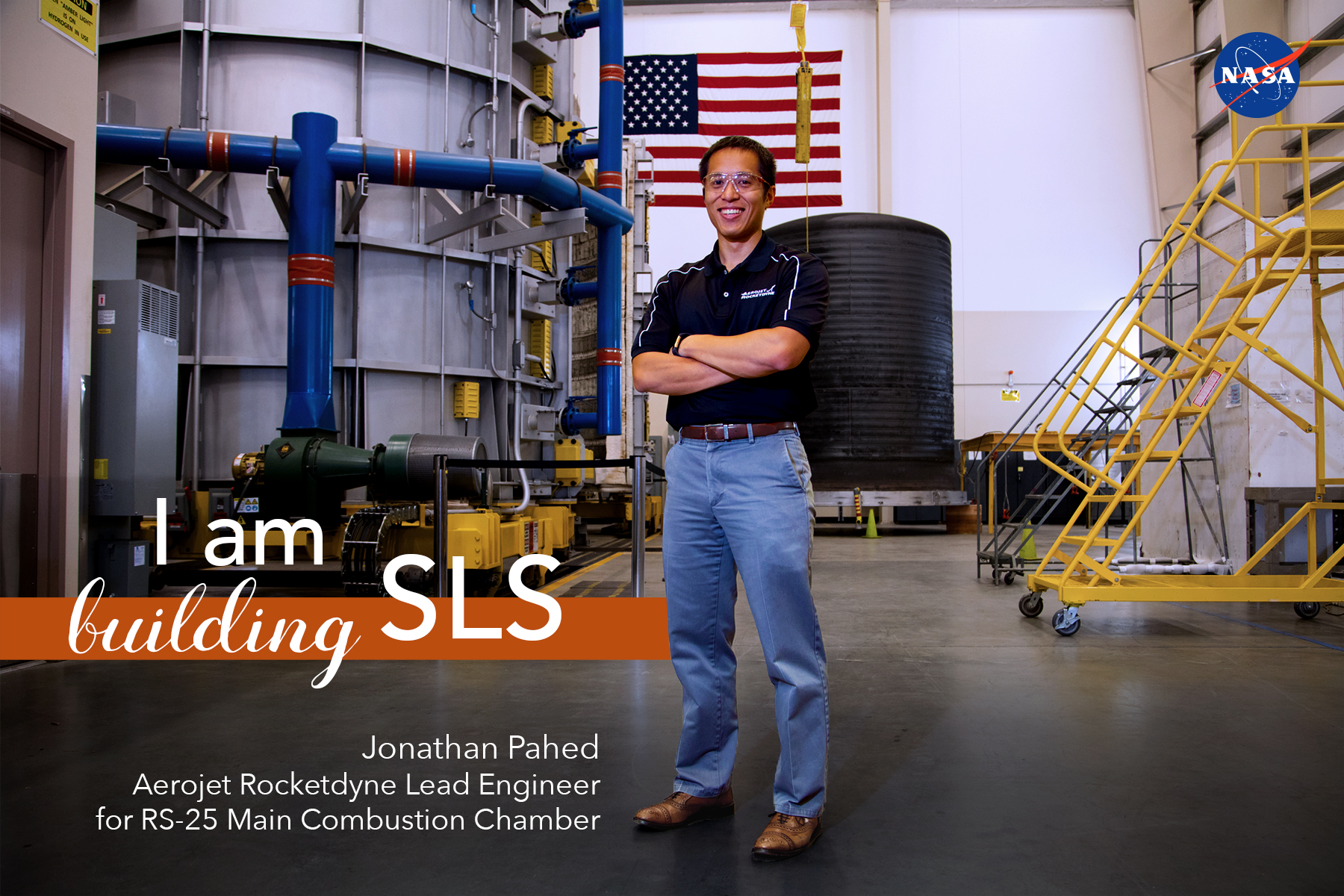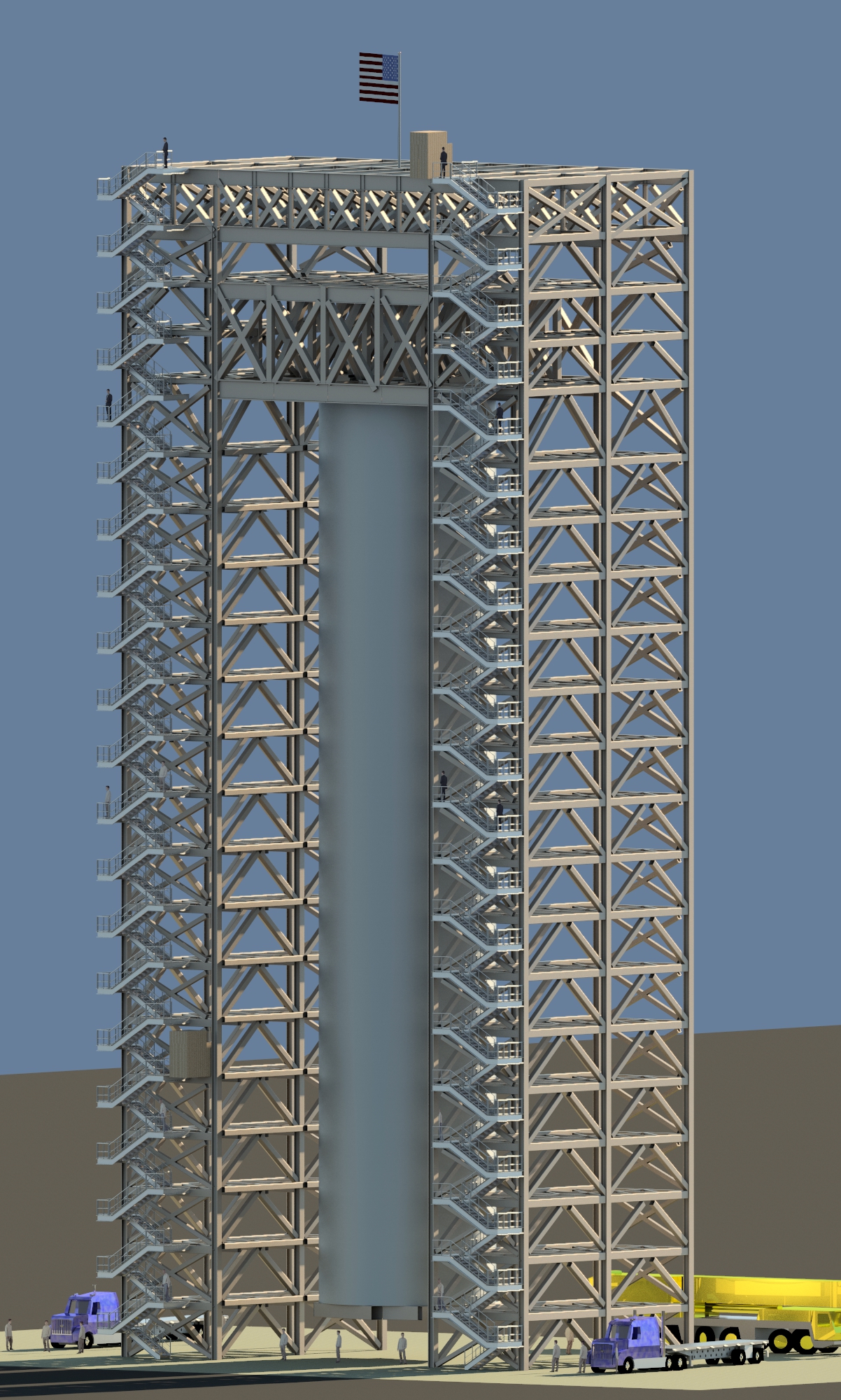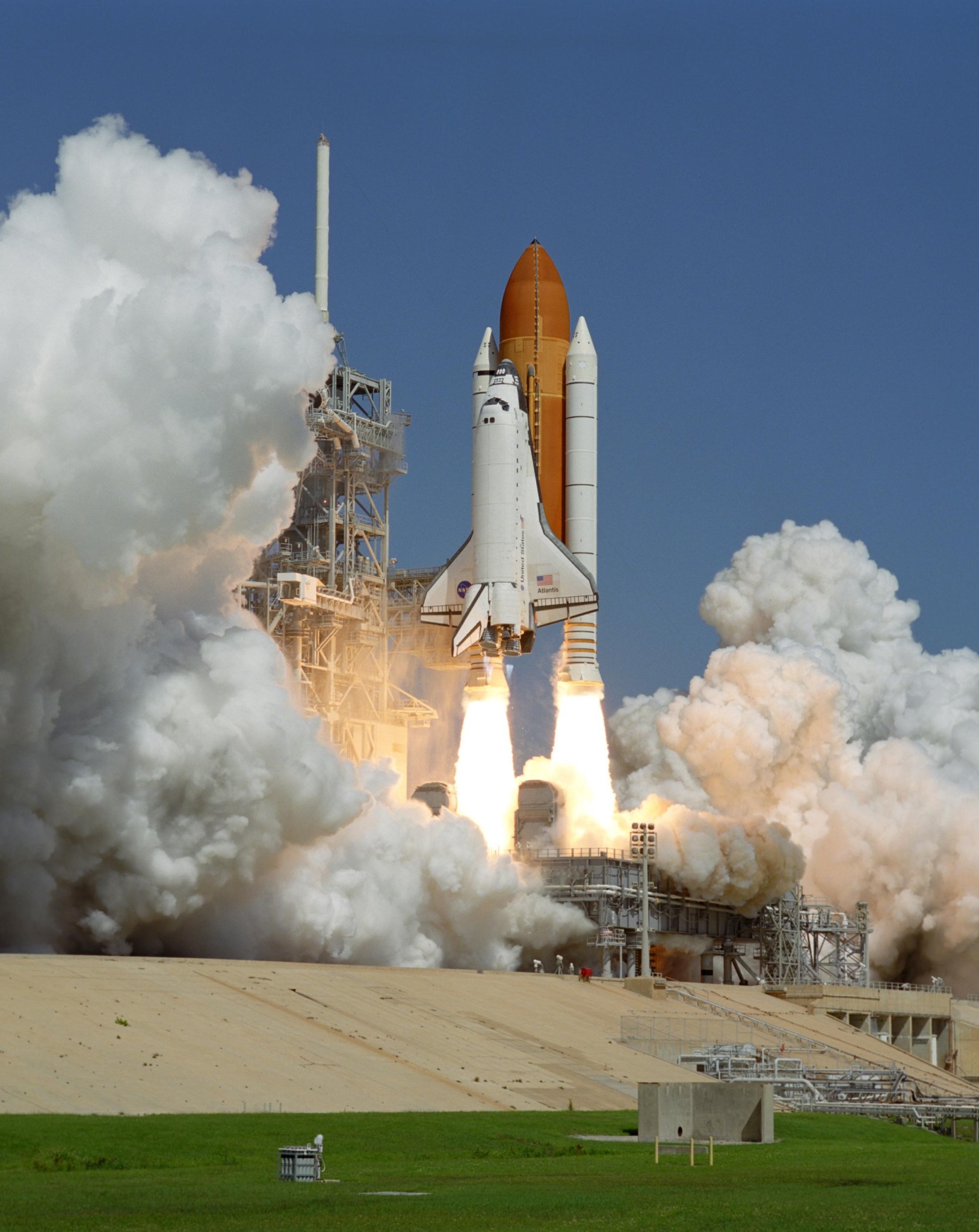In This Week’s Star
- NASA ‘Smart Manufacturing’ Updates, Tests Engine Part To Reduce Costs
- Cynthia ‘Tia’ Ferguson named Space Systems Department Director
- NASA’s Life Sciences Glovebox Set to Launch to Space Station Sept. 14
- NASA Exploration Ground Systems Moves Mobile Launcher for Testing
- NASA’s FOXSI Mission Observes X-Rays From Sun
- I am Building SLS: Jonathan Pahed
- Cosmic Collision Forges Galactic One Ring — in X-rays
- NASA’s Dawn Mission and Space Launch System Progress Highlighted on ‘This Week @NASA’
- This Week in NASA History: STS-115 Launches to ISS – Sept. 9, 2000
NASA ‘Smart Manufacturing’ Updates, Tests Engine Part To Reduce Costs
NASA redesigned and tested a key component for the RS-25 engine that powers the agency’s new deep space rocket, the Space Launch System, by incorporating modern manufacturing techniques that significantly reduce both cost and fabrication time.
The redesigned main combustion chamber, which is the heart of the engine, has performed well during two tests in flight-like conditions. During the tests, temperatures reached 6,000 degrees Fahrenheit, and the part experienced 3,000 pounds of pressure as the engine fired up in a test stand at NASA’s Stennis Space Center. When SLS launches, four RS-25 engines will produce two million pounds of thrust to help send SLS to space for missions to the Moon and beyond.
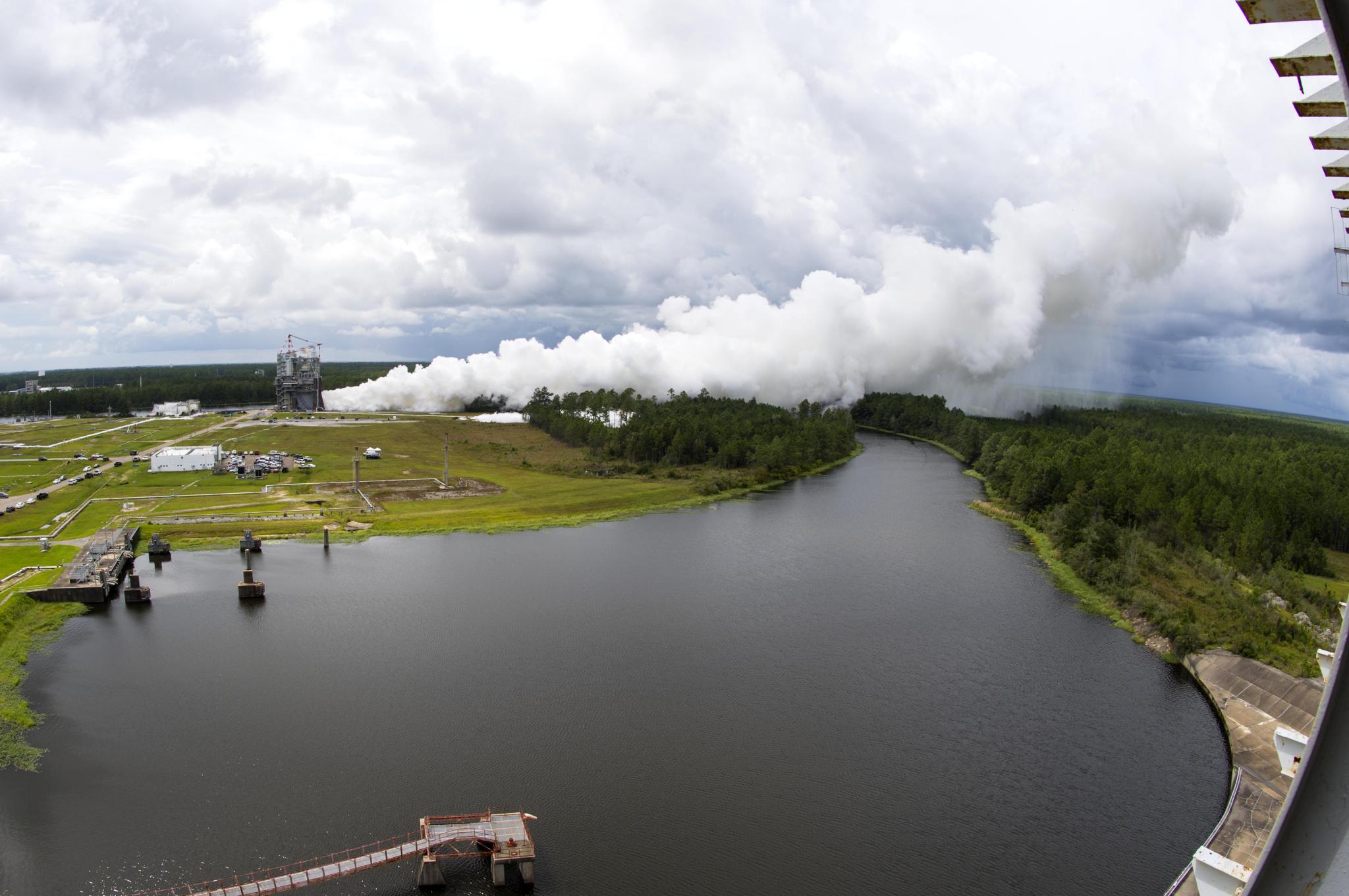
“We’re testing propulsion parts like the main combustion chamber, one of the most complex and critical components for engine operations, to show it can be made less expensively without sacrificing reliability, safety or performance,” said Steve Wofford, SLS liquid engines manager. “The SLS rocket will be the most powerful rocket in the world, and these tests show engines can be made with modern manufacturing techniques and still provide the power to safely send astronauts to the Moon.”
Inside the chamber, the fuel and oxidizer combust and flow through the nozzle, to turn the high-pressure combustion into the 500,000 pounds of thrust that each engine produces. The new chamber design reduces the complexity of the part by eliminating 29 welds. The chamber is made in less time for less money with a bonding technique called Hot Isostatic Pressure — or HIP — bonding. The chamber’s internal metal liner and external jacket are bonded together under very high pressures and temperatures.
“The innovative bonding process has reduced the chamber cost and build time by around 50 percent each,” said Mike Shadoan, the SLS combustion devices manager for liquid engines. “This series of nine tests allows us to test flight controllers for early missions and at the same time expose parts made with innovative techniques to the same conditions they will see during launch and flight.”
The RS-25 was proven during the Space Shuttle Program and has been updated with new controllers and nozzle insulation for its job with SLS. Currently, the SLS Program has 16 engines in its inventory from the Space Shuttle Program, enough for four flights. Engines for later flights are being built by the SLS core stage engine prime contractor, Aerojet Rocketdyne, at its factory in Canoga Park, California. NASA and Aerojet engineers are working to smartly incorporate today’s modern manufacturing techniques not just in the chamber, but also on key components across the entire engine, leading to a host of benefits in cost, schedule and reduced complexity.
“Engine hot fire testing is the ultimate demonstration that new component designs and incorporation of modern manufacturing technologies are paying off big-time for the program,” said Dan Adamski, RS-25 program director for Aerojet Rocketdyne. “Continued testing will integrate additional upgraded components into the engine design culminating with final certification testing in 2021.”
During six tests, technicians and engineers tested the first 3D printed part on an RS-25 engine, the pogo accumulator. Aerojet Rocketdyne is under contract to manufacture an initial set of six new engines for future SLS missions. These new engines will be fabricated using the components and techniques that are being validated on development engines during engine tests at Stennis.
NASA is leading a return to the Moon through an innovative and sustainable program of exploration to expand human presence into the solar system. Beginning with Exploration Mission-1, SLS and Orion will demonstrate the critical backbone capabilities that will carry humans to the Moon and farther into space than ever before on a variety of missions with increasing complexity. SLS’s unprecedented power and volume will also carry the large pieces of hardware needed to build the Gateway and other long-term infrastructure at the Moon and, later, for human missions to Mars.
Cynthia ‘Tia’ Ferguson named Space Systems Department Director
Cynthia “Tia” Kaiser Ferguson has been named director of the Space Systems Department in the Engineering Directorate at NASA’s Marshall Space Flight Center.
Succeeding recently retired Jay Onken, Ferguson will oversee an annual budget of over $110 million and manage a diverse, highly technical workforce of approximately 560 civil service and contractor employees located in six divisions and 18 branches. The Space Systems Department is responsible for designing, developing, assembling, integrating, testing and delivering flight, ground, prototype and development products for human spaceflight programs, science investigations and exploration initiatives.
With her selection as deputy director of the Space Systems Department in 2017, Ferguson was appointed to the Senior Executive Service, the personnel system covering top managerial positions in federal agencies.
Throughout her 28 years with NASA, Ferguson has served in multiple technical leadership positions including Marshall acting chief technologist and project manager for SERVIR — an Earth Science project that helps developing countries use Earth-observing satellites and geospatial technologies to manage climate risks and land use.
After beginning her career in 1990 at NASA’s Kennedy Space Center, Ferguson transferred to Marshall in 1995, where she held various positions, including structural and mechanical design branch chief in the Space Systems Department.
NASA’s Life Sciences Glovebox Set to Launch to Space Station Sept. 14
The Japan Aerospace Exploration Agency has rescheduled the launch of a cargo spacecraft from the Tanegashima Space Center to 3:59 p.m. CDT on Sept. 14. Live coverage of the launch will begin at 3:30 p.m. on NASA Television and the NASA portal.
The HTV-7 transfer vehicle will deliver NASA’s new, state-of-the-art microgravity research facility, the Life Sciences Glovebox, to the International Space Station. NASA will provide live coverage of HTV-7’s arrival at the space station on Sept. 18 beginning at 4:45 a.m. CDT. Capture is scheduled for around 6:25 a.m.
The glovebox, which underwent final preparation and testing at NASA’s Marshall Space Flight Center in late 2017 and early 2018, primarily will aid study of the long-term impact of microgravity on human physiology, revealing new ways to protect explorers in space while also helping to improve life on Earth.
Launch of the cargo craft from the Tanegashima facility, off the coast of southern Japan, was delayed by adverse weather conditions Sept. 10. The transfer vehicle will deliver more than 5 tons of supplies, water, spare parts and experiments to the space station.
Learn more about the Life Sciences Glovebox here. Follow the latest space station news on Instagram and Twitter.
NASA Exploration Ground Systems Moves Mobile Launcher for Testing
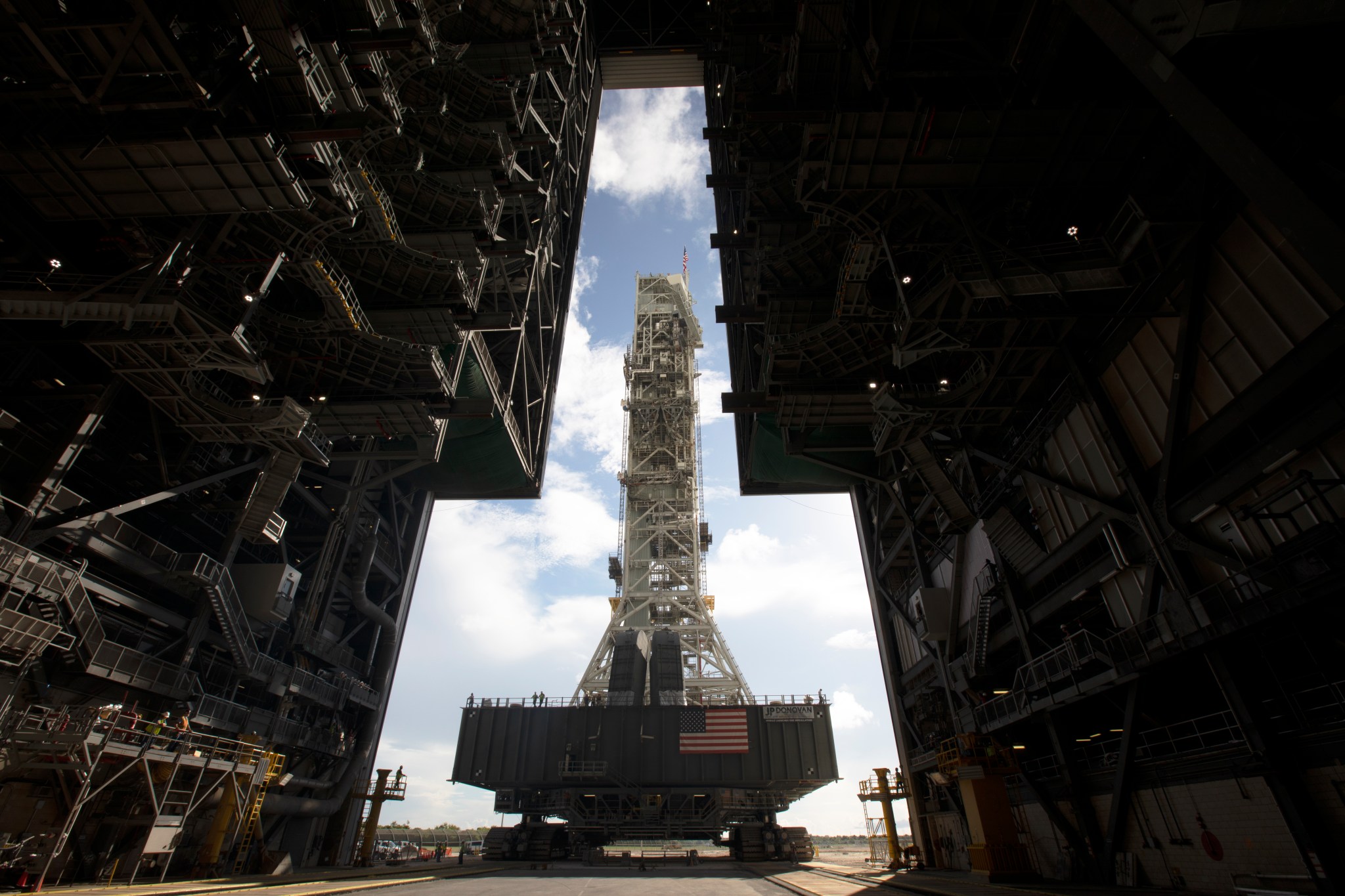
On Sept. 8, NASA Exploration Ground Systems moved the mobile launcher, which will be used to launch NASA’s Space Launch System rocket, into Kennedy Space Center’s Vehicle Assembly Building using the agency’s crawler-transporter-2, or CT-2. Earlier in the week, CT-2 moved the mobile launcher up to the surface of the pad where it underwent a fit check, followed by several days of systems testing. The 380-foot-tall mobile launcher is equipped with the crew access arm and several umbilicals that will provide power, environmental control, pneumatics, communication and electrical connections to SLS and Orion spacecraft. Exploration Ground Systems is preparing the ground systems necessary to launch SLS and Orion on Exploration Mission-1, missions to the Moon and on to Mars. (NASA/Cory Huston)
NASA’s FOXSI Mission Observes X-Rays From Sun
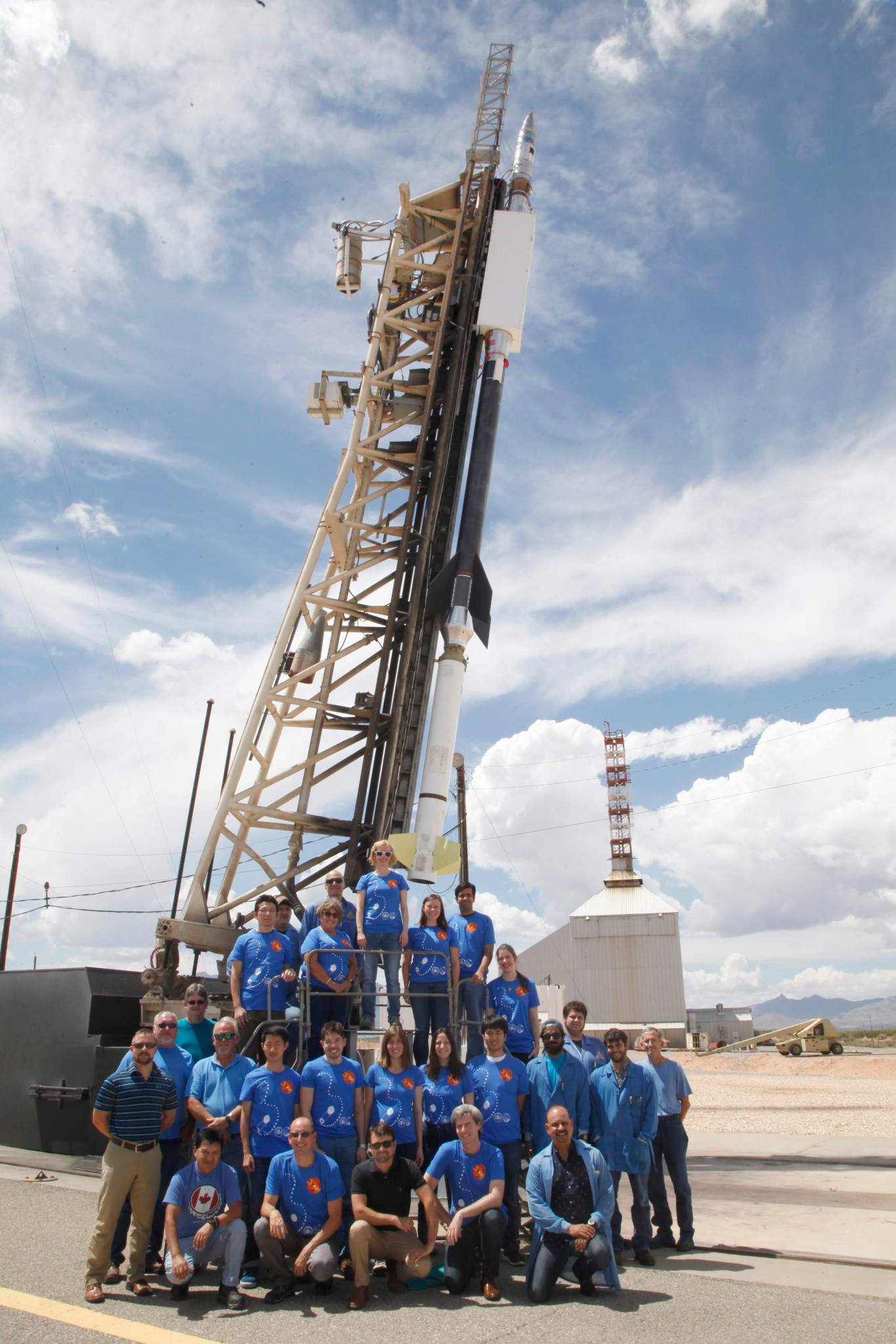
The Focusing Optics X-ray Solar Imager, or FOXSI mission, was successfully launched on a NASA Black Brant IX suborbital sounding rocket at 12:21 p.m. CDT on Sept. 7 from the White Sands Missile Range in New Mexico. Here, White Sands Missile Range team members take a break in front of the rocket prior to launch. The payload flew to an altitude of 189 miles before descending by parachute and was recovered. The science team reported that good data was obtained and all experiment systems worked well during the flight . FOXSI uses X-ray vision to find traces of nanoflares in the Sun’s atmosphere. Engineers and scientists at NASA’s Marshall Space Flight Center made the X-ray mirrors on the instrument. (NASA/FOXSI 3)
I am Building SLS: Jonathan Pahed
Meet Jonathan Pahed, a an Aerojet Rocketdyne lead engineer for RS-25 Main Combustion Chamber at NASA’s Marshall Space Flight Center.
From hiking to biking to running to rock climbing, I love a good adventure. My greatest adventure so far is working on engines for NASA’s deep space rocket, the Space Launch System.
As the lead engineer for the RS-25 main combustion chamber, I’m focused on new and improved ways of building the combustion chamber to save time and reduce costs. The main combustion chamber is one of the most critical and complex parts of the engine because it is where the entire thrust of the engine begins. Inside the chamber, the fuel and oxidizer mix and combust, then the high-pressure gas is accelerated out of the nozzle producing the thrust that powers the rocket.
I am a component product engineer and my team of about 20 engineers is a group of experts that have followed the chamber from design to testing and will continue to work with it through launch, flight and future missions. Deep space exploration isn’t just one flight; there will be many flights of SLS. We have begun the smart manufacturing of engines for future flights once the 16 proven engines from the space shuttle era have been used for the first four missions. I enjoy telling people I work for a company that helps send humans to the Moon and Mars and push the human race farther than it’s ever been.
We have updated the fabrication method of the chamber, and the new design reduces complexity by eliminating numerous piece parts and welds. The chamber is made in less time for less money using a metal bonding technique called Hot Isostatic Pressure — or HIP bonding.
The innovative bonding process has reduced costs by around 50 percent and shortened the build time from more than three years to around 18 months. Our work is improving the overall quality of America’s new deep space rocket.
Before supporting SLS, I earned a degree in mechanical engineering at California State University in Los Angeles in 2009 and a master’s degree in mechanical engineering from the University of California Los Angeles in 2017.
When I’m not working on the most powerful rocket in the world, I am highly entertained with my two favorite hobbies of all: spending time with my wife, Alison, and playing with our 1-year-old son Benjamin. I can’t wait to share stories with Benjamin when he is older about how his dad helped build the world’s most powerful rocket.
Cosmic Collision Forges Galactic One Ring — in X-rays
Astronomers have used NASA’s Chandra X-ray Observatory to discover a ring of black holes or neutron stars in a galaxy 300 million light years from Earth. This ring, while not wielding power over Middle Earth, may help scientists better understand what happens when galaxies smash into one another in catastrophic impacts. In this new composite image of the galaxy AM 0644-741, X-rays from Chandra — purple — have been combined with optical data from NASA’s Hubble Space Telescope — red, green, and blue. The Chandra data reveal the presence of very bright X-ray sources, most likely binary systems powered by either a stellar-mass black hole or neutron star, in a remarkable ring. The results are reported in a new paper led by Anna Wolter from INAF-Osservatorio Astronomico di Brera in Milano, Italy. (Image credit: X-ray: NASA/CXC/INAF/A. Wolter et al; Optical: NASA/STScI)
NASA’s Dawn Mission and Space Launch System Progress Highlighted on ‘This Week @NASA’
Updates from NASA’s Dawn mission, the latest RS-25 engine test and the move of the mobile launcher for the Space Launch System rocket are featured in the latest edition of “This Week @NASA,” a weekly video program broadcast nationwide on NASA-TV and posted online.
The Dawn spacecraft is expected to soon reach the end of a mission that has helped scientists characterize the early solar system and the processes that dominated its formation. During a Sept. 7 Science Chat at NASA’s Jet Propulsion Laboratory, experts discussed the mission. Launched in 2007, Dawn is the only spacecraft to orbit two deep space destinations — asteroid Vesta and dwarf planet Ceres. These celestial bodies are believed to have formed early in the history of the solar system. NASA’s Marshall Space Flight Center manages Dawn as part of the Discovery Program.
On Sept. 6 engineers at NASA’s Stennis Space Center conducted a certification hot fire test of an RS-25 engine flight controller unit. The flight controller will be used on a future flight of the SLS rocket. It was also the latest evaluation of a 3D-printed part that helps prevent forces that can cause the rocket to become unstable during flight.
The recent movement of NASA’s mobile launcher atop the crawler-transporter 2 at Kennedy Space Center is yet another sign of continued progress in the agency’s effort to send humans on missions to the Moon and eventually to Mars. The 380-foot-tall mobile launcher, which was recently modified for the SLS rocket, is undergoing tests in preparation for the first launch of SLS with the Orion spacecraft.
View this and previous episodes at “This Week @NASA” on NASA’s YouTube page.
This Week in NASA History: STS-115 Launches to ISS – Sept. 9, 2000
This week in 2000, space shuttle Atlantis, mission STS-115, launched from NASA’s Kennedy Space Center on the 19th flight to the International Space Station. The mission delivered and installed the P3/P4 integrated truss segment on the station. This was the first space station assembly mission after a four-year hiatus. The NASA History Program is responsible for generating, disseminating and preserving NASA’s remarkable history and providing a comprehensive understanding of the institutional, cultural, social, political, economic, technological and scientific aspects of NASA’s activities in aeronautics and space. For more pictures like this one and to connect to NASA’s history, visit the Marshall History Program’s webpage. (NASA)



























